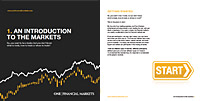

Dollar Gains, Sterling Weakens After U.K. CPI Climbs to 40-Year High
By Peter Nurse
Investing.com - The U.S. dollar edged higher in early European trading Wednesday, bouncing from a two-week low, while sterling slipped back after U.K. inflation jumped to a 40-year high.
At 03:00 ET (07:00 GMT), the Dollar Index, which tracks the greenback against a basket of six other currencies, rose 0.2% to 112.270, after dropping to the lowest since Oct. 6 at 111.76 overnight.
The minor gains in the U.S. currency Wednesday stopped the recent correction from its multi-decade peak of 114.78 reached at the end of September.
Risk sentiment has been on the rise of late, helped by the reversal of the U.K.’s ill-fated unfunded tax-cutting plans, solid corporate earnings boosting equity markets, and warmer weather helping European gas prices drop.
However, “the correction has nothing to do with any softening of Federal Reserve tightening expectations,” said analysts at ING, in a note. “Here the market firmly expects the Fed to hike 75bp on 2 November and prices a terminal rate as high as 4.90% next spring.”
This underlying support has been best illustrated of late against the Japanese yen, with USD/JPY up 0.1% at 149.46, climbing to its highest level since August 1990, and pushing toward the key psychological barrier at 150.
Breaking through the 145 level about a month ago prompted the Japanese authorities to intervene in support of the beleaguered yen, and the market is currently on full intervention watch.
Local Japanese media reported Finance Minister Shunichi Suzuki as saying earlier Wednesday that he was checking currency rates "meticulously" and with more frequency.
Elsewhere, GBP/USD fell 0.4% to 1.1277 after U.K. inflation accelerated more than expected in September, with the consumer price index climbing to 10.1% on an annual basis, matching a 40-year high reached in July.
While this number will increase the pressure on the Bank of England to continue tightening monetary policy, it also shows that household incomes will stay squeezed, likely leading to an economic slowdown as the year progresses.
EUR/USD dropped 0.3% to 0.9825, retreating from Tuesday's high of 0.9875, a level last seen on Oct. 6.
The September Eurozone CPI release is due later in the session, and, like its British counterpart, is expected to have climbed to double digits on an annual basis.
The European Central Bank meets on Thursday next week, and is widely expected to lift its key interest rates by 75 basis points. This would match its hike in September, after it started its tightening path with a 50 basis points hike in July.
AUD/USD fell 0.2% to 0.6297, while NZD/USD fell 0.1% to 0.5677, remaining elevated after Tuesday’s surprise inflation increase, which increased the likelihood New Zealand’s central bank will deliver more interest rate hikes this year.
USD/CNY rose 0.2% to 7.2244, with China’s central bank widely expected to keep benchmark lending rates unchanged for a second straight month on Thursday.
Begin trading today! Create an account by completing our form
Privacy Notice
At One Financial Markets we are committed to safeguarding your privacy.
Please see our Privacy Policy for details about what information is collected from you and why it is collected. We do not sell your information or use it other than as described in the Policy.
Please note that it is in our legitimate business interest to send you certain marketing emails from time to time. However, if you would prefer not to receive these you can opt-out by ticking the box below.
Alternatively, you can use the unsubscribe link at the bottom of the Demo account confirmation email or any subsequent emails we send.
By completing the form and downloading the platform you agree with the use of your personal information as detailed in the Policy.






